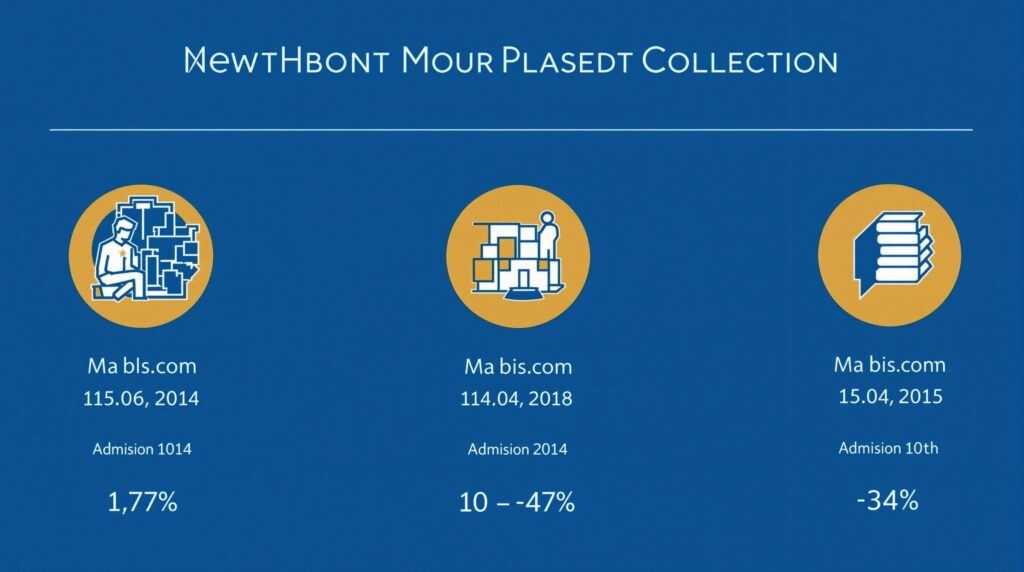Nonprofit government grants provide crucial financial support for individuals seeking to advance their education and career goals, offering billions in untapped funding with specific eligibility criteria and application processes. Understanding how to navigate these opportunities can transform your academic journey, opening doors that might otherwise remain closed due to financial constraints.
Key Takeaways
- Government grants represent billions in funding with only 10-30% of applications succeeding, making strategic approaches essential
- Proper registration through SAM.gov and verification of eligibility are critical prerequisites before applying
- Pell Grants form the foundation of undergraduate funding with $4 billion unclaimed annually due to incomplete applications
- TEACH Grants provide targeted funding for future educators willing to teach in high-need subjects for four years post-graduation
- Successful grant applications typically involve thorough research and alignment with the funding agency’s mission and priorities
Understanding the Government Grant Landscape
Government grants represent a significant but often underutilized resource for education. These funds don’t require repayment, making them particularly valuable compared to student loans. The federal government allocates billions annually toward educational advancement, yet the competition is fierce. Only 10-30% of applications succeed, according to data from Just Write Grants, but this shouldn’t discourage you.
The key to improving your chances lies in detailed research and strategic planning. Each grant program has specific eligibility requirements that must be met before application. For nonprofits seeking educational funding, having 501(c)(3) status is often mandatory, or alternatively, partnering with accredited educational institutions can provide access to additional funding streams.
Understanding the grant landscape also means recognizing that different funding sources have unique priorities. Federal grants typically have more rigorous application processes but offer larger awards, while state and private foundation grants might have more specialized focus areas with less competition.

Finding the Right Grants for Your Educational Journey
The first step in securing nonprofit government grants is identifying opportunities that match your specific situation. Eligibility criteria vary significantly between programs. For instance, the NSF Graduate Research Fellowship Program requires U.S. citizenship, while TEACH Grants establish a minimum GPA threshold of 3.25.
Before applying for federal grants, you’ll need to complete a registration process through SAM.gov. This process typically takes about 60 days and is a mandatory prerequisite for most federal funding applications. Planning ahead is essential, as this registration timeline can catch unprepared applicants off guard.
When evaluating potential grant opportunities, I recommend focusing on these key factors:
- Alignment between your academic/career goals and the grant’s purpose
- Realistic assessment of your ability to meet all eligibility requirements
- Funding amounts relative to the application effort required
- Post-award obligations or service commitments
- Application deadlines and your capacity to prepare a competitive submission
Pell Grants: The Foundation of Undergraduate Financial Aid
Pell Grants form the cornerstone of undergraduate financial assistance in the United States. According to the National Association of Student Financial Aid Administrators, the average Pell Grant award increased by 3.6% in 2024 under the new Student Aid Index formula, reaching $4,974 nationally. This represents a meaningful boost for the over 6.4 million students who received this support in the 2023-24 academic year.
The maximum award reached $7,395 in 2023-24, a $500 increase from the previous year. Yet despite this generous funding, the National College Attainment Network reports that approximately $4 billion in Pell Grants went unclaimed in 2023 due to incomplete FAFSA applications. This highlights the importance of completing all required paperwork thoroughly and on time.
State-level distribution varies significantly. Mississippi, New York, and Louisiana distributed the highest average awards at $4,624, $4,624, and $4,559 respectively. These variations often reflect differences in state funding policies and cost-of-living adjustments rather than preferential treatment.
TEACH Grants: Funding for Future Educators
For those pursuing careers in education, TEACH Grants offer specialized funding with specific post-graduation commitments. These grants provided an average award of $3,043 in 2020-21, with 44% of funds allocated to public four-year institutions according to the Department of Education.
The program’s structure includes a service obligation requirement that distinguishes it from other grant types. Recipients must teach high-need subjects like STEM fields or special education for four years after graduation. This commitment is significant – data shows that 51% of recipients are projected to default on this requirement, causing their grants to convert to loans.
The 2020 regulatory reforms brought welcome changes to the program, including:
- Simplified employment certification processes
- Expanded eligible teaching fields
- Extensions of service deadlines from 5 to 8 years post-graduation
- Additional flexibility related to pandemic disruptions
While the maximum annual award of $4,000 is lower than Pell Grants’ $7,395 ceiling, TEACH Grants remain an excellent option for committed future educators who are confident in their career path.
NSF Graduate Research Fellowships: Advancing in STEM
The National Science Foundation Graduate Research Fellowship Program (NSF GRFP) represents one of the most prestigious funding opportunities for STEM students. This program provides $37,000 annual stipends and $16,000 tuition allowances, with a total fellowship value of $159,000 – significantly higher than the average federal student loan of $37,000 per borrower.
Competition for these fellowships is intense, with an overall success rate of just 15%. Interestingly, institutional disparities exist in award distribution. According to Science, top R&D institutions like Cornell and Columbia produce approximately 20% of awardees, highlighting the advantage that well-resourced universities provide in the application process.
Success strategies can make a significant difference. Cornell’s writing workshops, for example, increased their applicants’ success rates to 30% – double the national average. This demonstrates how targeted preparation and mentorship can dramatically improve outcomes even in highly competitive grant programs.
Policy Changes Expanding Grant Accessibility
Recent legislative changes have significantly improved access to educational funding. The FAFSA Simplification Act reduced verification burdens, which contributed to a 14-17% rise in Pell Grant recipients at private colleges according to NASFAA data. Public two-year colleges saw an even more dramatic 17% increase in Pell recipients, outpacing four-year institutions.
TEACH Grant reforms have also expanded opportunities by extending service deadlines and providing pandemic-related flexibility. These changes recognize the challenges faced by educators during disrupted academic years and offer more realistic timelines for fulfilling service obligations.
Funding equity remains a challenge across states. Those with larger populations (such as California with 862,723 recipients) often have lower per-student funding than smaller states due to cost-of-living adjustments and allocation formulas. Understanding these regional variations can help you maximize your potential benefits based on your location.
Maximizing Success: Application Strategies and Tools
Several tools can dramatically improve your grant application process. Instrumentl provides automated grant discovery and deadline tracking, though its $5,000-$10,000 annual cost may be prohibitive for individual applicants. For nonprofit organizations, Neon CRM offers donor management integrated with grant compliance features.
For no-cost options, Grants.gov remains the comprehensive federal database containing over 1,800 funding opportunities. This should be your first stop when researching potential grant opportunities.
Success stories provide valuable lessons for applicants. Florida’s 436,304 Pell recipients secured average awards of $4,548 by prioritizing full-time enrollment campaigns. Texas leveraged its $63.9 million Federal Supplemental Educational Opportunity Grant allocation through community college partnerships to reduce award gaps.
When applying for grants, I recommend these proven strategies:
- Start the application process at least 90 days before deadlines
- Complete all registration requirements before beginning applications
- Align your project goals precisely with the grant program’s priorities
- Seek feedback from successful past recipients
- Follow application instructions exactly, with particular attention to formatting guidelines
Sources
NASFAA – Analysis Pell Grant Awards Grew Under New Federal Financial Aid Formula
NCAN – Report In 2023 High School Seniors Left Over 4 Billion on the Table in Pell Grants
BestColleges – Who Receives Pell Grants Statistics
Science.org – NSF Graduate Fellowships Disproportionately Go Students Few Top Schools
NSF – GRFP NSF Graduate Research Fellowship Program Solicitation
JustWriteGrants – Success Rate
Instrumentl – Grant Application Guidelines
ed.gov – TEACH Justifications



